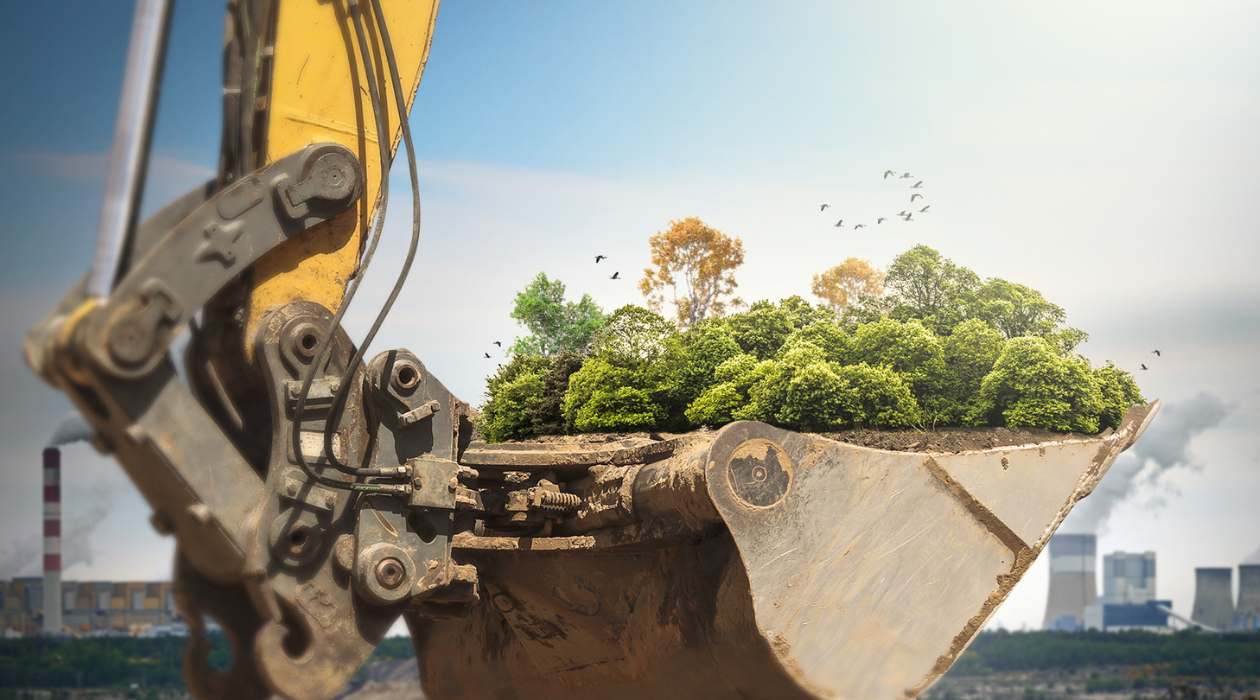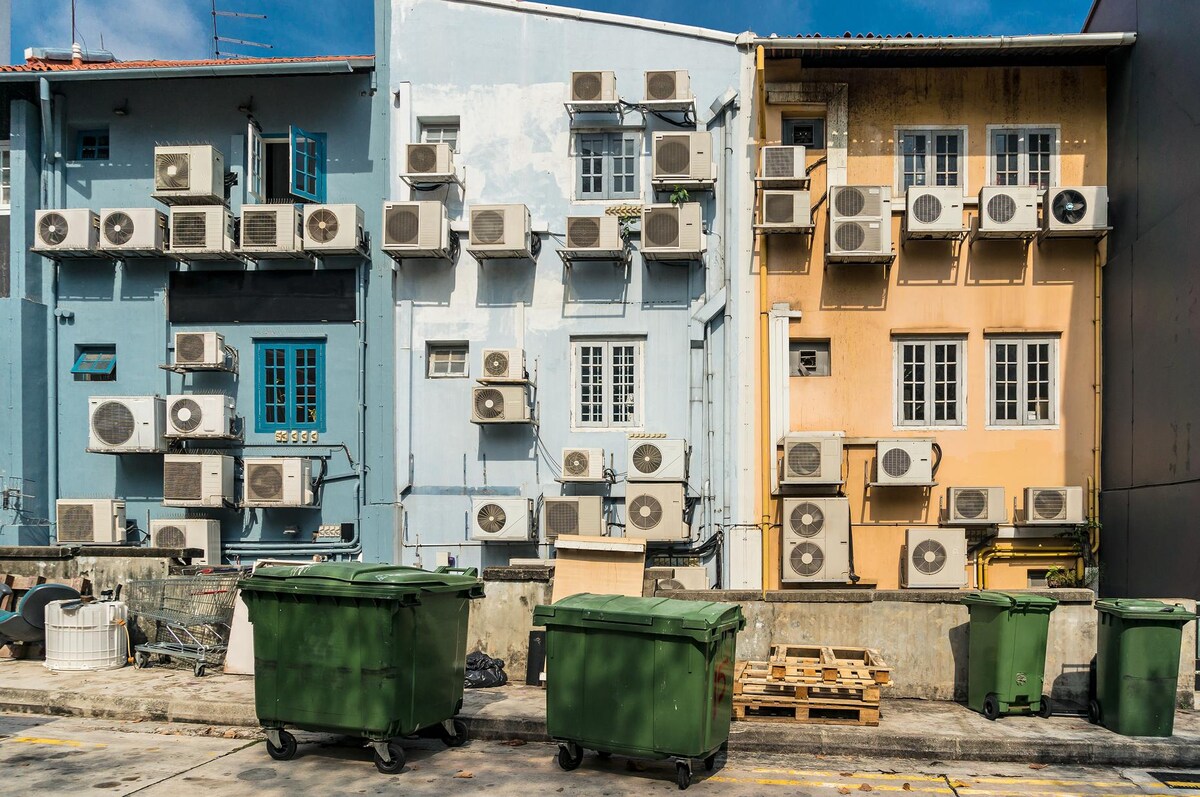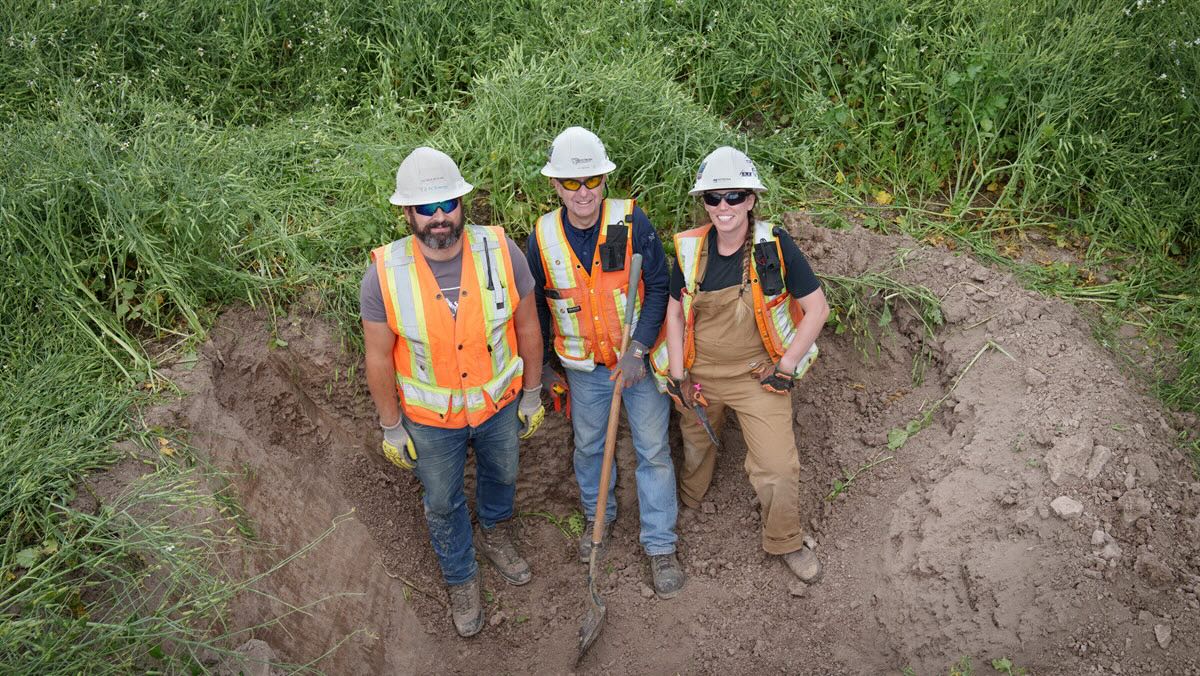Home>diy>Building & Construction>Why Is Construction Bad For The Environment


Building & Construction
Why Is Construction Bad For The Environment
Modified: January 24, 2024
Discover the negative impact of building construction on the environment. Learn why construction practices contribute to pollution and depletion of natural resources.
(Many of the links in this article redirect to a specific reviewed product. Your purchase of these products through affiliate links helps to generate commission for Storables.com, at no extra cost. Learn more)
Introduction
Construction, while essential for the growth and development of society, often comes at a significant cost to the environment. From deforestation and pollution to greenhouse gas emissions and waste production, the construction industry has a substantial impact on our planet.
As we continue to construct buildings and infrastructure to meet the needs of a growing population, it is crucial to understand the environmental consequences associated with these activities. By recognizing the harmful effects, we can work towards implementing sustainable practices and minimizing the negative impact on our ecosystem.
In this article, we will explore the various ways in which construction negatively affects the environment. From deforestation and habitat loss to pollution and waste, we will delve into the detrimental effects and discuss potential solutions to mitigate these impacts.
Key Takeaways:
- Construction contributes to deforestation, habitat loss, pollution, and waste, impacting the environment. Sustainable practices such as reusing materials and prioritizing existing structures can mitigate these effects and promote biodiversity conservation.
- The construction industry can reduce its environmental impact by implementing sustainable practices, such as using renewable energy sources, minimizing waste generation, and prioritizing water conservation. Collaboration and innovation are key to building a more sustainable future.
Read more: Why Is Turf Grass Bad For The Environment
Deforestation and Habitat Loss
One of the primary environmental concerns associated with construction is deforestation and habitat loss.
Deforestation is the process of clearing large areas of forestland to make way for construction projects, such as the expansion of residential areas, commercial buildings, and infrastructure development. This widespread removal of trees not only disrupts ecosystems but also results in the loss of biodiversity.
Trees play a crucial role in maintaining the balance of our environment. They act as carbon sinks, absorbing and storing carbon dioxide from the atmosphere. When forests are cleared for construction purposes, these carbon sinks are eliminated, leading to increased greenhouse gas emissions and contributing to climate change.
Moreover, deforestation destroys the habitats of numerous plant and animal species. Many animals rely on forests for their survival, using them as a source of food, shelter, and protection. With the loss of their natural habitats, these species are often forced to migrate or adapt to new environments, which can disrupt their natural behaviors and lead to a decline in their population.
To address the issue of deforestation and habitat loss in the construction industry, several sustainable practices can be implemented. Firstly, builders can prioritize the use of existing buildings and infrastructure over constructing new ones. By renovating and repurposing existing structures, the need for deforestation can be reduced significantly.
In addition, construction companies can opt for sustainable building materials, such as reclaimed wood or certified responsibly sourced timber, to minimize the demand for virgin wood. Implementing effective waste management practices, such as recycling and reusing construction materials, can also help reduce the need for excessive deforestation.
Lastly, planting trees and creating green spaces in and around construction sites can help mitigate the effects of deforestation. By incorporating landscapes and vegetation into the design of buildings, we can restore and maintain biodiversity while mitigating the environmental impacts of construction.
Pollution and Air Quality
Construction activities are a significant source of pollution and can have detrimental effects on air quality, both locally and globally.
During the construction process, heavy machinery and equipment emit pollutants, such as particulate matter, nitrogen oxides, and volatile organic compounds (VOCs). These pollutants can contribute to the formation of smog and ground-level ozone, leading to poor air quality and respiratory issues for both construction workers and nearby communities.
In addition to emissions from machinery, construction sites are also responsible for dust generation. Excavation, demolition, and material handling can all release large amounts of dust particles into the air, which can pose health risks when inhaled. Construction dust can contain harmful substances such as silica, asbestos, and lead, all of which can have severe health impacts, including respiratory problems and even cancer.
Another aspect contributing to pollution is construction-related transportation. The transportation of construction materials and workers to and from the site adds to vehicle emissions, further deteriorating air quality. Fossil fuel-powered vehicles used for these purposes contribute to the release of greenhouse gases and other pollutants.
To mitigate pollution and improve air quality, construction companies can implement several measures. Using cleaner fuel alternatives, such as electric or hybrid machinery and vehicles, can significantly reduce emissions. Additionally, implementing dust control measures, such as covering materials and managing construction waste, can help minimize the release of harmful dust particles.
Furthermore, incorporating green building practices can help reduce pollution. This includes using sustainable materials with low VOC emissions, as well as implementing proper ventilation systems to improve indoor air quality. By adopting these practices, the construction industry can contribute to cleaner air and a healthier environment for both workers and the surrounding communities.
Greenhouse Gas Emissions
The construction industry is a significant contributor to greenhouse gas emissions, which are a primary driver of climate change.
Construction activities release large amounts of carbon dioxide (CO2) and other greenhouse gases into the atmosphere. The extraction, manufacturing, and transport of construction materials, as well as the energy consumed during the construction process, all contribute to these emissions.
Concrete production, for example, is a major source of greenhouse gas emissions. The cement used in concrete production requires a significant amount of energy and releases large quantities of CO2 during the chemical reaction that occurs during curing. Additionally, the production of steel, another commonly used material in construction, releases substantial amounts of CO2.
Furthermore, the energy consumed by construction machinery, equipment, and temporary power sources also contributes to greenhouse gas emissions. The reliance on fossil fuels, such as diesel and gasoline, for powering construction vehicles and equipment releases CO2 and other harmful pollutants into the atmosphere.
To address the issue of greenhouse gas emissions in construction, sustainable practices can be implemented. Using alternative materials with lower carbon footprints, such as recycled or low-emission building materials, can significantly reduce emissions associated with construction projects.
Additionally, adopting energy-efficient construction methods and technologies can help minimize energy consumption during the construction process. This includes using renewable energy sources, such as solar panels and wind turbines, to power construction sites, as well as implementing energy-saving measures in buildings, such as insulation and efficient HVAC systems.
Furthermore, sustainable design principles, such as incorporating passive heating and cooling techniques and maximizing natural lighting, can help reduce the energy demand of buildings over their lifetime.
By taking a proactive approach to reducing greenhouse gas emissions in construction, we can contribute to the mitigation of climate change and create a more sustainable future for generations to come.
Consider using sustainable materials and construction methods, such as recycled materials, energy-efficient designs, and green building certifications, to minimize the environmental impact of construction projects.
Energy Consumption and Waste
The construction industry is known for its high energy consumption and generation of significant amounts of waste.
Energy is consumed at various stages of the construction process, from the extraction and manufacturing of materials to the operation of construction machinery and equipment. The energy-intensive nature of construction contributes to the depletion of natural resources and increases greenhouse gas emissions.
Moreover, the construction industry generates substantial amounts of waste, including construction and demolition waste (C&D waste). This waste consists of materials such as concrete, bricks, wood, and metals, which are often disposed of in landfills.
To address the issue of energy consumption in construction, energy-efficient practices can be implemented. This includes using energy-efficient machinery and equipment, promoting the use of renewable energy sources, and adopting sustainable design techniques to minimize the energy demand of buildings.
Additionally, reducing waste generation in construction is essential. Strategies such as recycling and reusing materials can help minimize the need for raw materials and reduce the environmental impact. Implementing construction waste management plans can ensure proper segregation, recycling, and disposal of construction waste, diverting it from landfills.
Furthermore, adopting prefabrication and modular construction methods can help reduce energy consumption and waste generation. These techniques involve manufacturing building components off-site and assembling them on-site, significantly reducing construction time, material waste, and energy consumption.
By prioritizing energy-efficient practices and implementing sustainable waste management strategies, the construction industry can minimize its environmental impact and contribute to the conservation of resources.
Water Usage and Contamination
Water is an essential resource in construction, and its usage and potential contamination are significant environmental concerns. Construction activities consume vast amounts of water for various purposes, including site cleaning, material production, and concrete mixing.
Excessive water usage in construction can strain local water sources, especially in areas prone to water scarcity. Moreover, construction sites can contribute to water pollution through the discharge of sediment, chemicals, and construction-related waste into lakes, rivers, and groundwater.
Sediment runoff is a common issue during construction, as soil erosion from exposed construction sites can result in sediment being carried into nearby water bodies. This sediment can negatively impact aquatic ecosystems by reducing water clarity, disrupting fish and plant species, and impairing the overall health of the ecosystem.
In addition to sediment, construction sites can also introduce chemicals into water bodies. These chemicals may come from construction materials, such as paints, solvents, and adhesives, as well as from the improper handling and disposal of construction waste.
To mitigate the impact of water usage and contamination in construction, implementing effective water management practices is crucial. This includes reducing water consumption through the use of water-efficient equipment and techniques, such as low-flow fixtures and water recycling systems.
Furthermore, implementing erosion control measures, such as silt fences and sediment basins, can help prevent sediment runoff and protect nearby water bodies. Proper management of construction waste, including the segregation and disposal of hazardous materials, is also vital in preventing water contamination.
Moreover, incorporating green infrastructure into construction projects can help mitigate water-related issues. This includes implementing rainwater harvesting systems, green roofs, and permeable pavement, which can reduce stormwater runoff and replenish local aquifers.
By prioritizing water conservation and adopting sustainable water management practices, the construction industry can minimize water usage and pollution, preserving this precious resource for future generations.
Waste and Landfill
The construction industry is notorious for generating vast amounts of waste, contributing to the strain on landfills and environmental degradation.
Construction waste includes various materials such as concrete, wood, metal, plastics, and packaging waste. These materials are often discarded and end up in landfills, posing significant environmental challenges.
When construction materials are disposed of in landfills, they take up valuable space and contribute to the release of greenhouse gases. As these materials break down, they undergo decomposition processes that produce methane, a potent greenhouse gas that contributes to climate change.
Additionally, the disposal of construction waste in landfills can lead to soil and water contamination. Harmful substances can leach into the soil and groundwater, posing risks to human health and ecosystems. For example, certain construction materials contain hazardous chemicals such as asbestos, lead, and mercury, which, if not properly managed, can have severe environmental and health consequences.
To address the issue of waste generation and landfill usage, the construction industry can implement strategies for waste reduction, reuse, and recycling. Adopting a circular economy approach, where materials are reused and recycled instead of being disposed of, can significantly reduce the environmental impact of construction waste.
Builders can prioritize the use of recycled and reclaimed materials in construction to minimize the demand for new resources. Implementing waste management plans that include proper sorting, separation, and recycling of construction waste can divert a significant amount of materials from landfills.
Furthermore, embracing prefabrication and modular construction methods can help reduce waste generation. By manufacturing building components off-site and assembling them on-site, construction waste can be minimized, and materials can be properly utilized.
Collaboration among stakeholders, including builders, architects, suppliers, and governments, is crucial in promoting waste reduction and implementing sustainable waste management practices. By working together, the construction industry can move towards a more circular approach, minimizing waste generation and reducing the environmental impact on landfills.
Frequently Asked Questions about Why Is Construction Bad For The Environment
Was this page helpful?
At Storables.com, we guarantee accurate and reliable information. Our content, validated by Expert Board Contributors, is crafted following stringent Editorial Policies. We're committed to providing you with well-researched, expert-backed insights for all your informational needs.















0 thoughts on “Why Is Construction Bad For The Environment”